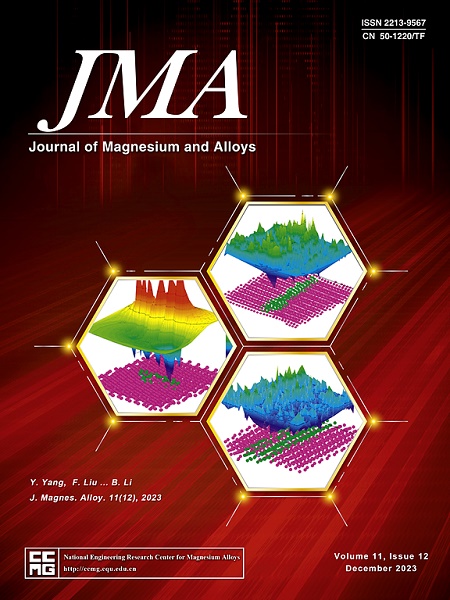纳米镍对改善氢氧化镁脱氢动力学的催化机理
IF 15.8
1区 材料科学
Q1 METALLURGY & METALLURGICAL ENGINEERING
引用次数: 0
摘要
尽管 MgH2 的解吸动力学较慢,但它作为最理想的固体储氢材料之一已被广泛研究。添加镍等催化剂可以改善 MgH2 的解吸动力学,而催化作用则归因于不同的物质,如镍、Mg2Ni、Mg2NiH0.3 和 Mg2NiH4。本研究在介孔碳(Ni@C)上合成了镍纳米颗粒(Ni-NPs),以改善 MgH2 的氢解吸动力学。Ni@C 的使用大大降低了脱氢活化能,从 176.9 kJ mol-1 降至 79.3 kJ mol-1,脱氢峰值温度从 375.5 ℃ 降至 235 ℃。通过先进的像差校正环境透射电子显微镜和/或 X 射线衍射,对 Ni 催化剂的机理进行了深入研究。在第一次脱氢过程中,详细的微观结构研究表明,MgH2 的分解最初是由 Ni-NPs 触发的,这是限制速率的一步。随后,生成的镁迅速与 Ni-NPs 反应生成 Mg2Ni,进一步促进残余 MgH2 的脱氢。在接下来的脱氢循环中,Mg2NiH4 可以迅速分解成 Mg2Ni,从而不断促进 MgH2 的分解。我们的研究不仅阐明了镍催化剂的作用机理,而且有助于设计和组装具有更好的 MgH2 脱水动力学性能的催化剂。本文章由计算机程序翻译,如有差异,请以英文原文为准。
Catalytic mechanisms of nickel nanoparticles for the improved dehydriding kinetics of magnesium hydride
MgH2, albeit with slow desorption kinetics, has been extensively studied as one of the most ideal solid hydrogen storage materials. Adding such catalyst as Ni can improve the desorption kinetics of MgH2, whereas the catalytic role has been attributed to different substances such as Ni, Mg2Ni, Mg2NiH0.3, and Mg2NiH4. In the present study, Ni nanoparticles (Ni-NPs) supported on mesoporous carbon (Ni@C) have been synthesized to improve the hydrogen desorption kinetics of MgH2. The utilization of Ni@C largely decreases the dehydrogenation activation energy from 176.9 to 79.3 kJ mol−1 and the peak temperature of dehydrogenation from 375.5 to 235 °C. The mechanism of Ni catalyst is well examined by advanced aberration-corrected environmental transmission electron microscopy and/or x-ray diffraction. During the first dehydrogenation, detailed microstructural studies reveal that the decomposition of MgH2 is initially triggered by the Ni-NPs, which is the rate-limiting step. Subsequently, the generated Mg reacts rapidly with Ni-NPs to form Mg2Ni, which further promotes the dehydrogenation of residual MgH2. In the following dehydrogenation cycle, Mg2NiH4 can rapidly decompose into Mg2Ni, which continuously promotes the decomposition of MgH2. Our study not only elucidates the mechanism of Ni catalyst but also helps design and assemble catalysts with improved dehydriding kinetics of MgH2.
求助全文
通过发布文献求助,成功后即可免费获取论文全文。
去求助
来源期刊

Journal of Magnesium and Alloys
Engineering-Mechanics of Materials
CiteScore
20.20
自引率
14.80%
发文量
52
审稿时长
59 days
期刊介绍:
The Journal of Magnesium and Alloys serves as a global platform for both theoretical and experimental studies in magnesium science and engineering. It welcomes submissions investigating various scientific and engineering factors impacting the metallurgy, processing, microstructure, properties, and applications of magnesium and alloys. The journal covers all aspects of magnesium and alloy research, including raw materials, alloy casting, extrusion and deformation, corrosion and surface treatment, joining and machining, simulation and modeling, microstructure evolution and mechanical properties, new alloy development, magnesium-based composites, bio-materials and energy materials, applications, and recycling.
 求助内容:
求助内容: 应助结果提醒方式:
应助结果提醒方式:


